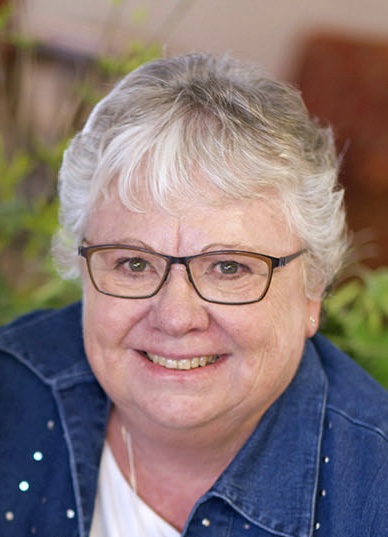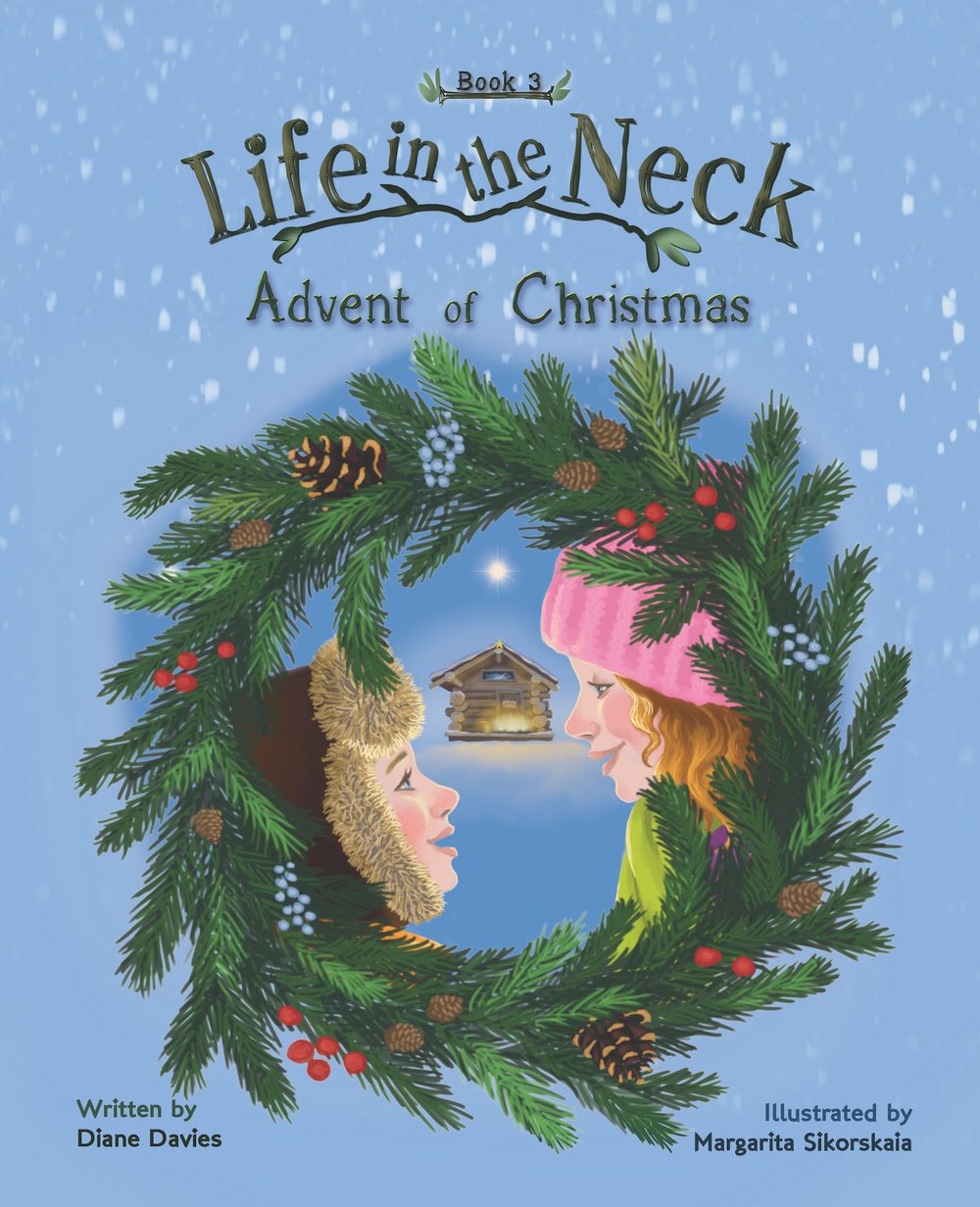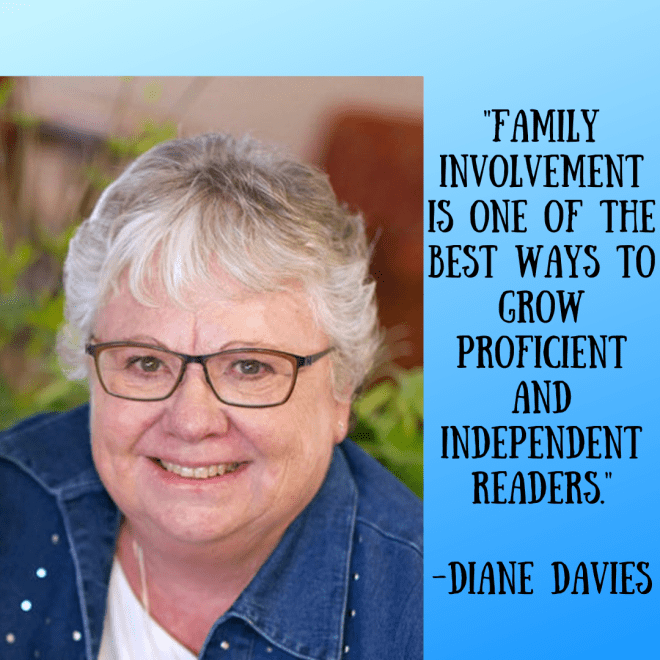It is well known that reading is like vitamins for the brain. One of the best indicators of children’s IQ is how many words they know. It is also well known that, hands-down, the best way to increase children’s vocabulary is by reading to them. Seriously. Researchers count the number of different words encountered from TV, movies, billboards, online scrolling, texting, etc., and books, and there’s no comparison. Books win the count every time. By a long shot. Even better, researchers agree that bookworms tend to be more empathetic and compassionate than non-readers. (If you don’t believe me, verify the facts with Sarah Mackenzie’s The Read-Aloud Family, Jim Trelease’s The Read-Aloud Handbook, or a search engine – it’s pretty astounding 🙂 ).
Since we’re on the topic of the importance of reading, please give a warm welcome to today’s guest blogger, Diane Davies. Diane is an award-winning author from Minnesota with years of experience teaching reading. Let’s see what she says about growing readers. Welcome, Diane!

Growing readers, just like growing anything, takes attention, patience, and time. As a primary classroom teacher (grades 1 – 3) for twenty six years, the cultivating of reading skills is high on my list of responsibilities.
How do children learn to read? The debate over the answer to this question has been going on for over a century. Throughout my teaching career, differing curriculums would come and go, each claiming to have the definitive answer. Research has shown that written language is a code. Certain combinations of letters predictably represent certain sounds. And for the last few decades, the research has been clear: Teaching young kids how to crack the code—teaching systematic phonics—is the most reliable way to make sure that they learn how to read words.
Of course, there is more to reading than seeing a word on a page and pronouncing it out loud. As such, there is more to teaching reading than just teaching phonics. Reading requires children to make meaning out of print. They need to know the different sounds in spoken language and be able to connect those sounds to written letters in order to decipher words. They need deep background and vocabulary knowledge so that they understand the words they read. Eventually, they need to be able to recognize most words automatically and read connected text fluently, attending to grammar, punctuation, and sentence structure. (1)
Reading instruction in today’s classrooms include a number of areas:
- Phonemic awareness, letter knowledge, and concepts of print.
- The alphabetic code: Phonics and decoding.
- Fluent, automatic reading of text.
- Vocabulary.
- Text comprehension.
- Written expression.
- Spelling and handwriting.
- Screening and continuous assessment to inform instruction.
- Motivating children to read and developing their reading horizons. (2)
A number of years ago a young couple that had a student in my 1st grade classroom came in with a good question for me. They were prepared to spend $300 – $400 on a reading program for their child and were wondering which program I would recommend. Both programs contained a number of tapes with recorded books. The child would sit alone with whatever technology was available at the time and play through the stories. My suggestion was that they take the money they intended to spend and buy the actual books listed in the program. Then make time to sit with their child in their lap and read the stories together helping to build reading enjoyment. I’m not sure what they decided to do but I would give that same advice to parents today.
Family involvement is one of the best ways to grow proficient and independent readers. In doing research for this article, I came across Growing Book by Book – A Guide to Nurturing Young Readers. The article includes 100 Ways to Grow a Reader – an amazing list of activities for both classroom teachers and parents to use with beginning readers. I’ve included from the list a number of ideas for parents to adopt at home. You can’t possibly do them all, but you can choose the ones that fit your family. Parents can bring joy and play into a child’s life through books and help foster the lifelong love of reading.

- Read, read, read to your child.
- Talk with and to kids.
- Make lists with kids. Reading and writing go hand in hand.
- Be a reader. Kids need to see you read.
- Never leave home without something to read.
- Let kids read to their pets, siblings, neighbors.
- Show kids how print is everywhere – good habit to develop.
- Allow kids to choose some of their own reading material.
- Don’t stop reading aloud to a child once the can read on their own.
- Kids can read more than just books – cereal boxes, magazines, flyers, signs, street signs.
- Seek out good quality literature.
- Keep a list of books you read each year. Help your child do the same.
- Help kids find their favorite reading place.
- Help your child get their own library card.
- Let kids stay up late now and again to read a good book.
- Let your kids meet real authors.
- Have your kids join or start a book club.
- Don’t take a vacation from reading during the summer.
- Cooking with kids provides lots of literacy opportunities.
- Read with your child 15 – 20 minutes each day. This is truly the best gift you can give to create a reader!
(1) https://www.edweek.org/teaching-learning/how-do-kids-learn-to-read-what-the-science-says/2019/10 (2) https://www.readingrockets.org/article/9-components-effective-research-supported-reading-instruction (3) https://growingbookbybook.com/100-ways-grow-reader/
Thank you for these pointers, Diane! Parents and teachers, check out Diane’s beautifully illustrated books, and ask your librarian to schedule an author visit!




Diane Davies, breast cancer survivor and award-winning author of Life in the Neck New Friends, Life in the Neck Squirrel Trouble, Life in the Neck Advent of Christmas, and Jeannie Ann’s Grandma Has Breast Cancer, lives in the Neck right next to the animals making their home there. You’ll find her in one of the Neck’s two houses with her husband Papa Butch. Her grandchildren, Elsie and Eli, live right next store with their mom and dad. The whole family enjoys life on the St. Croix River near Hastings, Minnesota.
Readers, post your positive comments about growing readers 🙂

As a former librarian, I began sharing books with my kids as infants. We developed a wonderful habit of sitting down together with physical books.
LikeLiked by 1 person
Yes! We started reading to our kids as babies too – it makes for so much beautiful bonding and a love for reading!
LikeLike